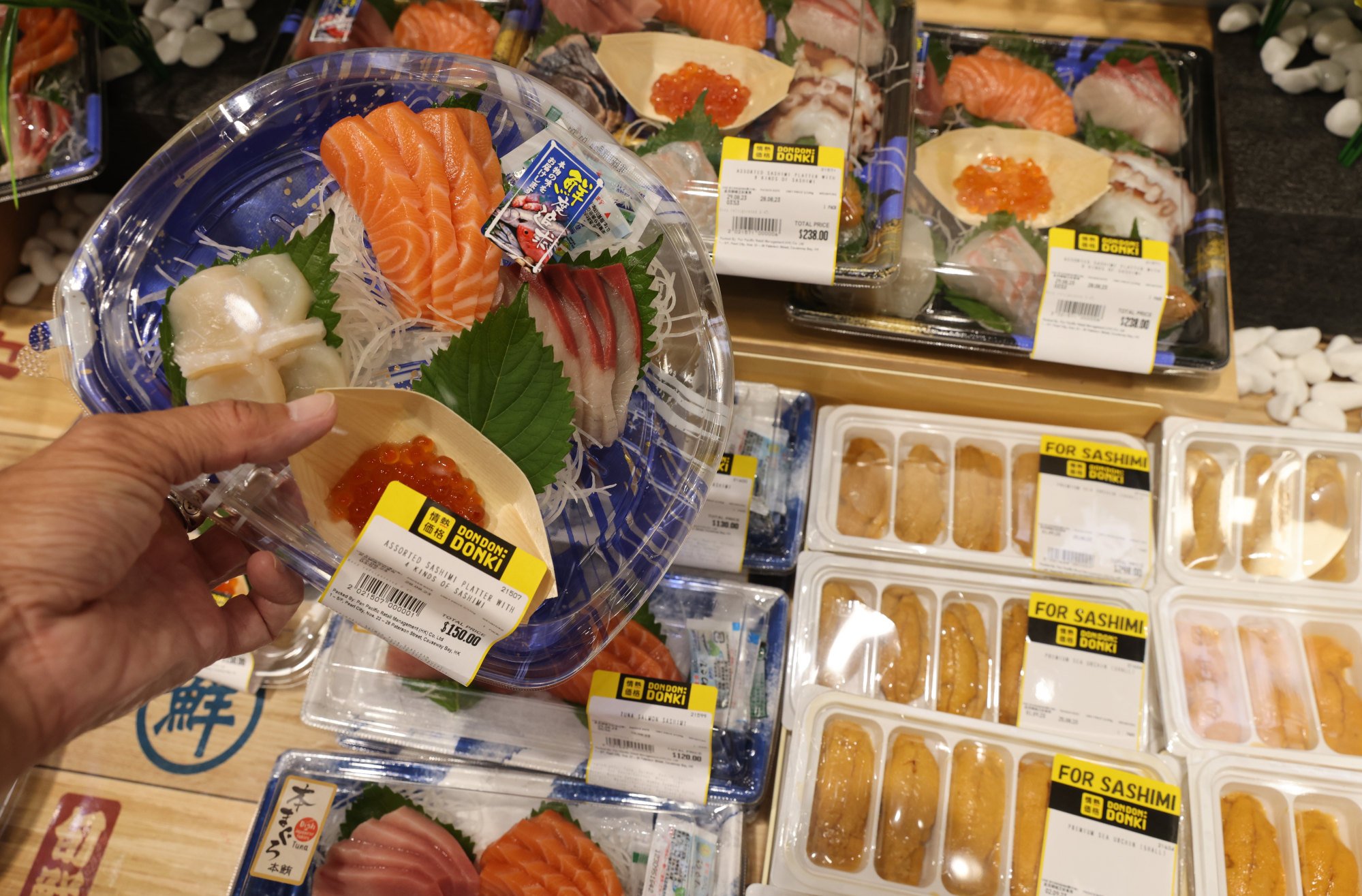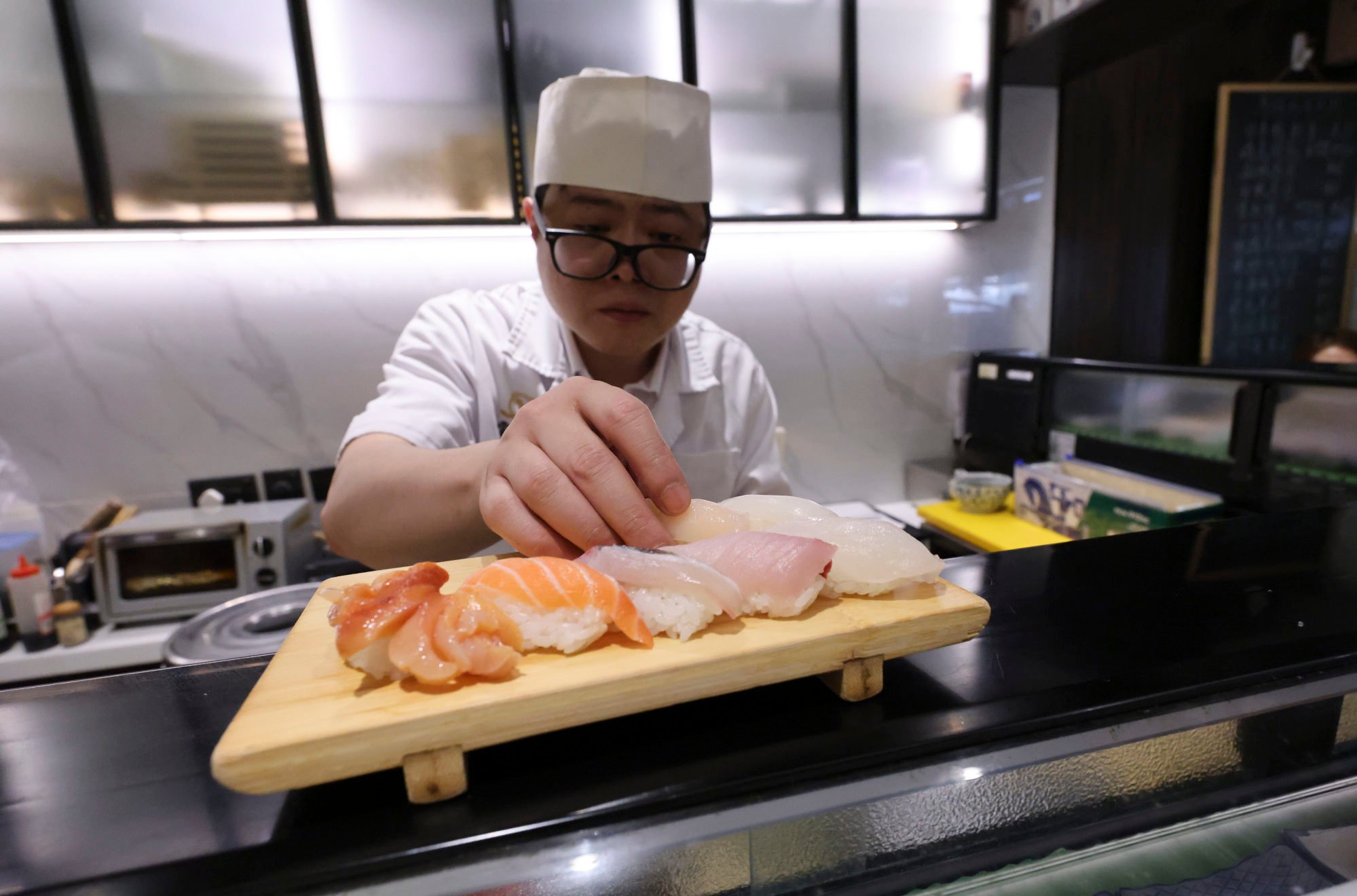Axe Hong Kong’s Japanese seafood ban based on data and to show contrast from mainland China with ‘one country, two systems’, Japan’s envoy in city says
“For example, if Hong Kong can lift the ban earlier than mainland China, Hong Kong can showcase the beautiful merits of one country, two systems in front of Japan,” he said.
The governing principle guarantees Hong Kong a high degree of autonomy for 50 years after reunification, and is stipulated in the Basic Law, the city’s mini-constitution.
Japanese consulate in Hong Kong urges end to ban on seafood imports
The waste water is filtered through a process known as ALPS – advanced liquid processing system – which is approved by the International Atomic Energy Agency, to remove most radioactive elements.
The decision prompted the Hong Kong government to ban aquatic products from 10 prefectures: Tokyo, Fukushima, Chiba, Tochigi, Ibaraki, Gunma, Miyagi, Niigata, Nagano and Saitama.
The mainland decided to ban Japanese sea products from all prefectures.
Since the process started on August 24, the plant has released 23,400 tonnes of treated waste water in three rounds, with the fourth scheduled to begin in late February.

In 2022, the mainland and Hong Kong were the largest and second-largest markets for Japanese seafood, accounting for 87.1 billion yen (US$611.8 million) and 75.5 billion yen worth of Japan’s seafood exports, respectively.
Okada said the exports had dropped sharply since the bans were introduced.
According to data from Japan’s Ministry of Agriculture, Forestry and Fisheries, the value of marine exports from the country to the city in October fell by 16.1 per cent year-on-year to 5.9 billion yen, down from 7 billion yen last year.
Export values to the mainland in the same period plummeted from 8.6 billion yen last year to 1.4 billion yen, an 83.8 per cent decrease year on year.
The ban also caused Hong Kong to overtake the mainland as Japan’s top seafood export destination, according to Okada.
No room to ease Hong Kong’s ban on Japanese seafood, environment chief says
Secretary for Environment and Ecology Tse Chin-wan earlier said the government had taken a conservative approach towards the ban as the discharge was unprecedented and difficult to monitor.
The city has been testing seafood imports, local fishery products and seawater samples since the discharge. So far, all tests by the centre have been satisfactory.
Industry leaders have said almost a third of Hong Kong’s 1,400 Japanese restaurants have shut their doors permanently this year, with high-end omakase establishments offering top-quality sushi being hit the hardest.
The sluggish recovery in the city’s tourism industry, a weak yen and the seafood ban are some of the factors behind their closure, according to restaurateurs.
Okada lamented the seafood ban’s impact on the restaurants, some of which closed after operating for more than a decade.

“I am afraid by Lunar New Year, more Japanese restaurants will not sustain their operations or give bonuses to their staff as per tradition,” he said.
The consul general described “acute heartache” he felt for the restaurants that had “serviced Hongkongers for so many years”.
Quoting a call by G7 leaders in October for the immediate scrapping of the import bans, he urged the city to drop the measures.
Hong Kong’s Japanese seafood ban sees eateries flounder amid customer fears
“We have a lot of conversations and meetings between the two governments on various levels,” Okada said. “The Japanese government monitors the seawater and seafood, and so does the Hong Kong government, with imports from Japan. With so much data accumulated, none showed any problems.”
He added that the Japanese government would continue providing information and scientific evidence to its Hong Kong counterparts “as faithfully and transparently as possible”.
“I hope the Hong Kong government will make the right decision at the right time, so Japan and Hong Kong can move on to the next stage where we can cooperate on many, many issues,” he said.